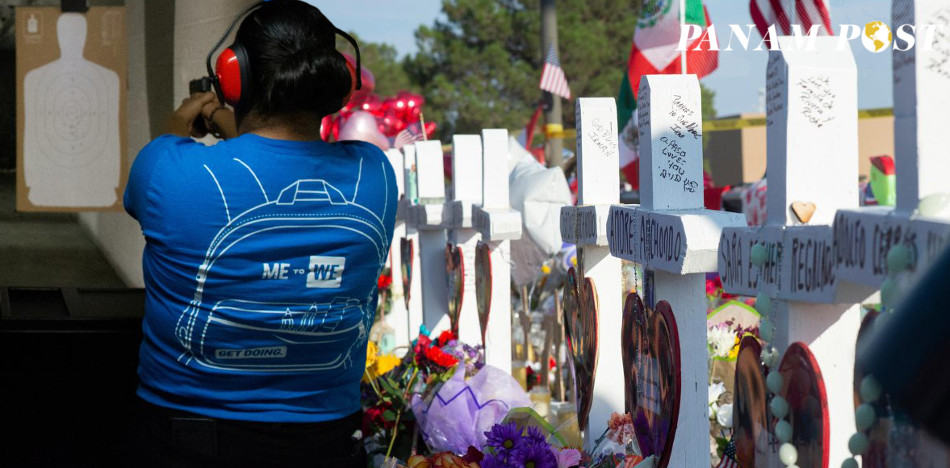
Spanish – Arms sales doubled in El Paso, Texas, where a terrorist, allegedly targeting 22 the Hispanic population, killed 22 people.
The attack revived the national debate around the prohibition and regulation of arms. Meanwhile, the victims and their neighbors are opting for another solution: to arm themselves and learn to defend themselves. They no longer want to be at the mercy of an attacker.
Sales doubled in the week following the attack
At least two of the survivors of the incident have now enrolled in shooting classes with Michael McIntyre, general manager of Gun Central, one of El Paso’s largest gun shops.
In a statement to Reuters, the shooting instructor said that arms sales doubled in the week following the attack and the number of enrollees who want to learn to use firearms grew substantially. “I have more than 50 students for Saturday’s class and about the same number for Sunday’s class, and I usually have about seven,” he said.
McIntyre said new students want to learn to protect themselves in case something happens, noting that “this isn’t the last mass shooting we’re going to see” in the United States.
Most of the sales were of conceal-carry guns or weapons that can be tied to the ankle on concealed under clothing.
Targeted in Walmart attack, Hispanics in El Paso flock to firearms classes https://t.co/jRH7Pn7Bfb pic.twitter.com/4XqHL3S9Cy
— Reuters (@Reuters) August 13, 2019
The shooting instructor pointed out that this is the first time that classes and sales have picked up so much in that way after an attack. One hypothesis is that the average Texan is armed, while the Hispanic population is not.
At least seven of the victims of the attack were Mexican citizens. As the attack was allegedly aimed at Latin Americans, who make up the majority of El Paso’s population, many of them chose to arm themselves.
Texas to make carrying arms more flexible
According to estimates, at least 35.7% of the population of Texas owns weapons. However, the number may be higher, since in this state it is not mandatory to register the guns in possession.
Only the weapons of owners who volunteered for a background check are listed. That’s why Texas ranks 18th in the national gun ownership index.
Through the Second Amendment to the Constitution, U.S. citizens have the right to bear arms and even to form a militia to confront the national government if it oversteps its functions.
So much so that, starting from 1st September, carrying weapons will be made even more flexible through nine bills signed by Governor Greg Abbott, which have the backing of the National Rifle Association.
For example, it will be possible to carry firearms in places of worship. This reverses the ban that occurred following the shooting in which 26 people were killed in a church in the town of Sutherland Springs.
In the middle of the church shooting, the killer was stopped by a neighbor, Stephen Willeford, a plumber by profession, who pulled out his AR-15 and fired two fatal shots into the chest and abdomen of the attacker.
Citizens have the right to self-defense. Therefore, Texas has passed laws that facilitate the possession of weapons. The most recent one is related to the one that will allow tenants to be armed, without the homeowners being able to prevent it.
In other words, the state government grants greater autonomy to individuals to defend themselves against a threat.
Owning a gun doesn’t imply firing it
However, experts such as the shooting instructor mentioned above, recognize that most people could not defend themselves in an attack such as El Paso and teach this in their classes.
Before they learn to shoot, students learn to escape the gunfire. The instructor said that only 1% of people respond to a gunshot with another. “One in a hundred shoots, the other 99 will leave,” he added.
However, the classes offer the possibility of knowing how to respond to an attack. That’s why McIntyre provides courses of Latin American families like that of Guadalupe Segovia, 35, who, with her two daughters, attends McIntyre’s shooting classes.
Guadalupe also invited her sisters. She emphasizes that it is not only about going to the shooting range but that people must feel familiar. “I think guns should be a privilege and serve for safety, not to go and kill people,” concludes Guadalupe.
Cases like hers and so many other Latinos who choose to arm themselves in the face of possible danger show that the possibility of defending oneself against an attack is not only an exercise of freedom but of security.
 Versión Español
Versión Español












